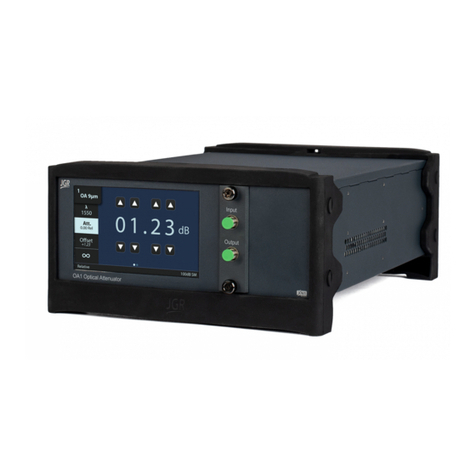PT1 User Manual
iii
M-PT1-001-01
TABLE OF CONTENTS
LIST OF FIGURES AND TABLES ................................................................................................................... v
COMPLIANCE ..............................................................................................................1
FDA-CDRH Compliance.............................................................................................................................. 1
CSA / IEC Compliance ................................................................................................................................ 1
CE Compliance........................................................................................................................................... 1
GENERAL INFORMATION ............................................................................................2
PT1 Polarity Tester Overview .................................................................................................................... 2
Applications............................................................................................................................................... 2
Key Features.............................................................................................................................................. 3
Included Accessories ................................................................................................................................. 3
Optional Accessories ................................................................................................................................. 3
SAFETY INFORMATION ...............................................................................................4
Safety Markings on the Unit...................................................................................................................... 4
Classification.............................................................................................................................................. 4
Important Safety Information ................................................................................................................... 5
Laser Hazards ............................................................................................................................................................... 5
Electrical Hazards......................................................................................................................................................... 5
GETTING STARTED......................................................................................................7
Initial Inspection ........................................................................................................................................ 7
Operational Requirements ........................................................................................................................ 7
Product Overview...................................................................................................................................... 8
PT1 Front Panel ............................................................................................................................................................ 8
PT1 Rear Panel ............................................................................................................................................................. 8
OPERATION...............................................................................................................10
Powering Up the Meter...........................................................................................................................10
Device Information and Settings .............................................................................................................10
Selecting a Test Plan................................................................................................................................ 10
Performing a Measurement ....................................................................................................................12
Visual Fault Locator ................................................................................................................................. 15
PT1 WEBPAGE ...........................................................................................................16
Dashboard ...............................................................................................................................................16
Polarity Types .......................................................................................................................................... 17
Settings.................................................................................................................................................... 18
Input Strings ............................................................................................................................................................... 18
Network Settings........................................................................................................................................................ 19
Upgrade...................................................................................................................................................................... 20
Help ......................................................................................................................................................... 21
About....................................................................................................................................................... 22




























